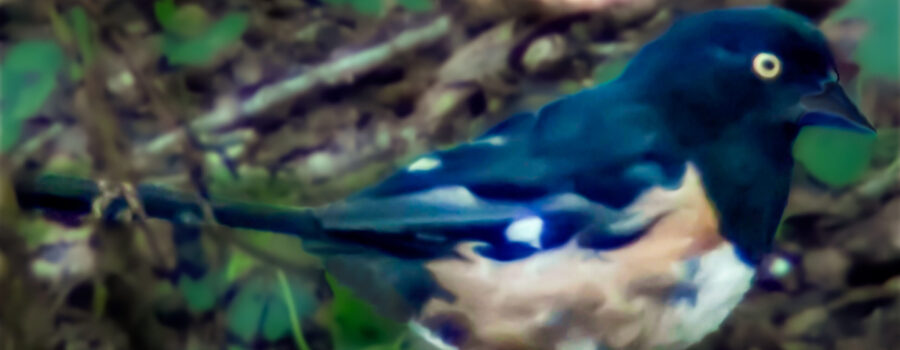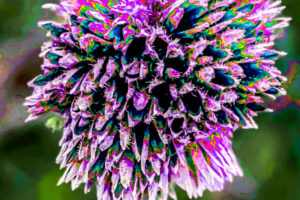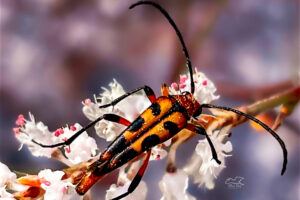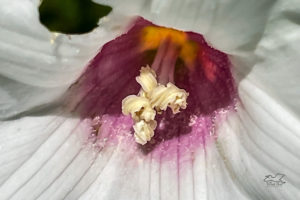The Colorful Eastern Towhee Tends to be Rather Shy

About six weeks ago I was sitting on my steps watching the birds and squirrels eat at my backyard feeding station when I first saw the towhee. I had never seen one in my area before, so of course I wanted to try to get some photos. It’s not that Eastern towhees (Pipilo erythrophthalmus) are that uncommon around here; they’re not, but they tend to be shy and to stay away from people. And this one has been no exception to the rule. He doesn’t show up every day, and when he does show up he tries for the most part to stay in the brush covered parts of the yard, only venturing into the open for short periods of time. And he never stays around for long, either. He’ll grab a few seeds or berries and then he disappears into the brush. Needless to say, that behavior has made getting decent images of him quite a challenge.
I try to sit outside near the feeding area at least three or four times a week in the mornings. That way the birds get used to my presence, and I get to see a good sampling of who’s showing up. Sometimes I stay out there for an hour or more and other times it’s only 20-30 minutes. It all depends on the weather and who shows up. Since the towhee started coming around I’ve also been putting some of the feed on the ground since that’s where they like to eat, and I’ve discovered that many of the small songbirds also like that. The other advantage is that the squirrels prefer to eat up on the porch railing, making the lower food more available to the birds. Finally, after weeks of trying, I was able to get these two shots of the towhee out where he could be seen. They still aren’t fabulous, and I intend to keep trying for better, but I was thrilled to get anything even remotely useable.
The Eastern towhee used to be called the rufous sided towhee, but has now been broken down into several separate species and subspecies. It can be found in most of the eastern United States and in southeastern Canada. The northern populations do tend to migrate south for the winter, but they otherwise tend to be resident birds. They can be found in any number of habitats as long as there is fairly thick underbrush and a good leaf layer on the ground. Nests are usually built either on the ground or sometimes in a brushy shrub. It’s unusual to find a towhee nest higher than three feet above the ground. The female builds the nest by herself from twigs, leaves and vines, but both sexes incubate the eggs and care for the young. Down here, they can have up to three clutches of three to six eggs per year. Further north it’s more likely to be only one to two.
These birds eat a variety of foods including seeds, berries, fruit, insects, spiders, and even small snakes, lizards, and frogs. They will also feed on meat scraps dropped by carnivores. During the breeding season the majority of the diet consists of high protein items, while more seeds, berries, and even flower buds are eaten during the winter and early spring. They are sexually dimorphic with males being black above and females brown. Both sexes of adults do have the white bellies and rufous sides, while immature birds are usually all brown. Since I have been observing this particular bird, I have not seen a female in the area. I’m not sure if there is one who is even more shy than her mate, or if the female has moved on to a different territory now that breeding season is over. And of course, it always possible that something has happened to her or that this is a young male that had no mate this year. I plan to keep watching and if she’s around maybe I will spot her. I’m hoping to get some better photos of the male too, but I was so excited to have gotten these, that I just couldn’t wait to share them!






Recent Comments